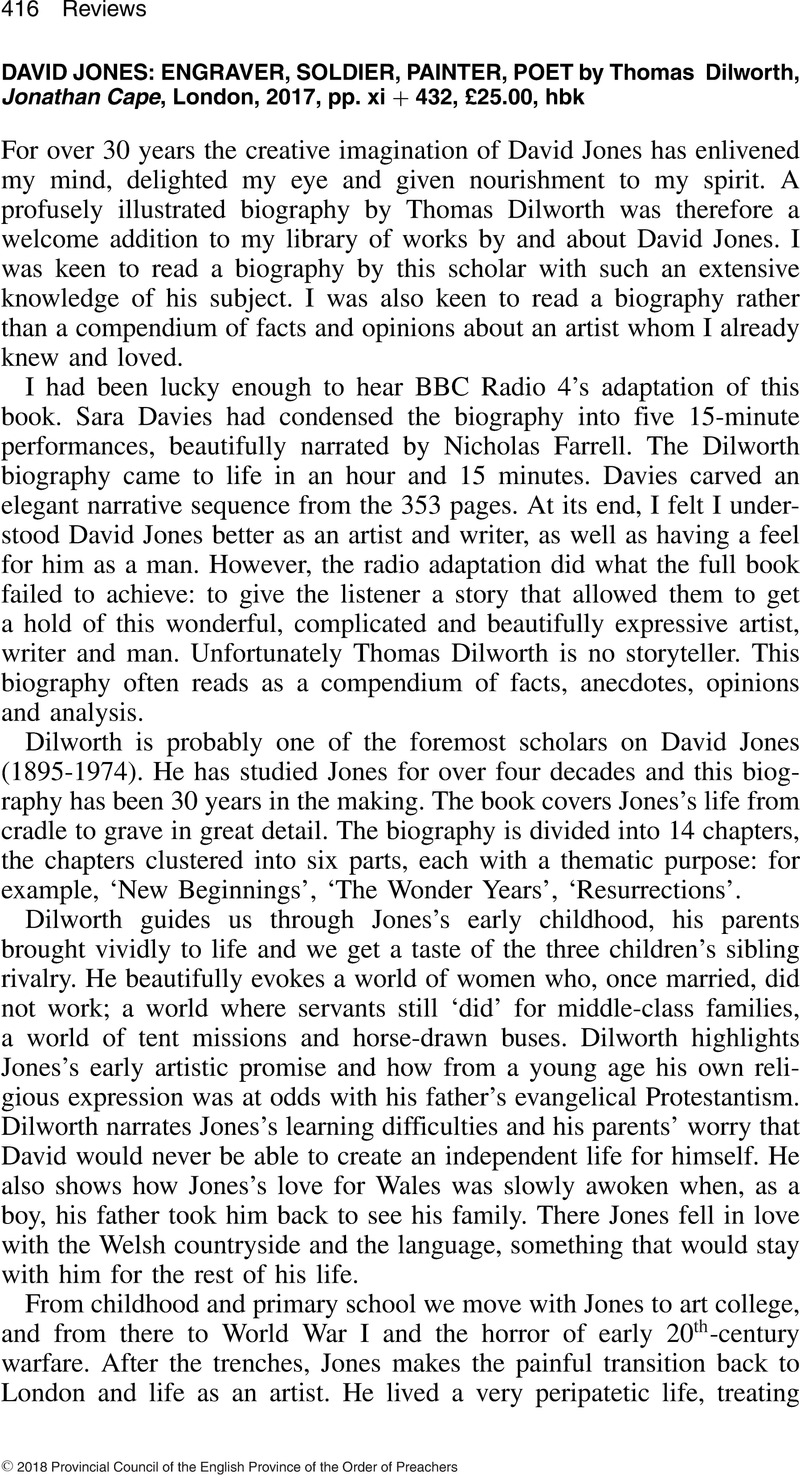No CrossRef data available.
Article contents
David Jones: Engraver, Soldier, Painter, Poet by Thomas Dilworth, Jonathan Cape, London, 2017, pp. xi + 432, £25.00, hbk
Review products
David Jones: Engraver, Soldier, Painter, Poet by Thomas Dilworth, Jonathan Cape, London, 2017, pp. xi + 432, £25.00, hbk
Published online by Cambridge University Press: 01 January 2024
Abstract
An abstract is not available for this content so a preview has been provided. Please use the Get access link above for information on how to access this content.

- Type
- Review
- Information
- Copyright
- Copyright © 2018 Provincial Council of the English Province of the Order of Preachers


